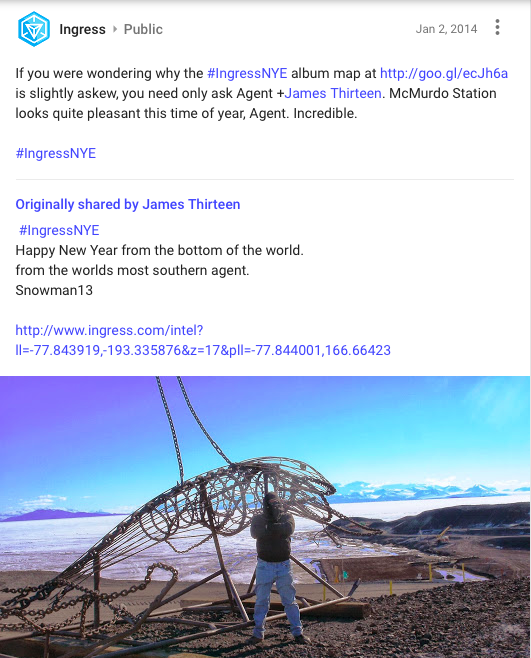The top post on the subreddit r/Antarctica on July 12 was an ambiguous statement of intent."Trying to get in contact with someone at McMurdo Station for a project," a user, DarthMewtwo, wrote.The request caught the attention of someone who identified as an IT worker at McMurdo, the largest manmade community on Earth's frozen, southernmost continent, and one of three American Antarctic research outposts.
Crescent Moon over Radarsat as the Sun begins to shine from behind the hills at McMurdo. Image: Alan Light
Niantic creates portals in highly-populated areas. But it relies on Ingress players submitting portals for less-populated areas, such as Antarctic research stations, which Niantic then approves or denies. Niantic requires players to take pictures of their portal submission and rejects any submissions with third-party photos. Basically, Niantic doesn't want players submitting portals for places they've never been. This means that in theory, a portal should indicate an Ingress player has physically been to its location."Even though policy says you can't connect cell phones and tablets to the Wi-Fi, people do"
Three screenshots from the Ingress Intel Map's "Mission" tab, captured on October 25. The tab shows available tasks to complete in Antarctica, including two tasks that have been completed among four to six players.
Comm feature of the Ingress Intel Map, restricted geographically to McMurdo Station, taken October 20. A translated version of messages above shows user @SolarQuest33 telling a player to download Telegram, a messaging app.
On the Ingress Google Plus page, the most recent Antarctica-related post was made by Hugo Contreas on August 29. The post shows a portal link between Argentina and King George Island, an Antarctic island and site of a research station operated by the Chilean Antarctic Institute (INACH), whose rules are even stricter than those of the NSF. Per INACH rules, personal internet use is banned at King George Island."I will never give up!"

